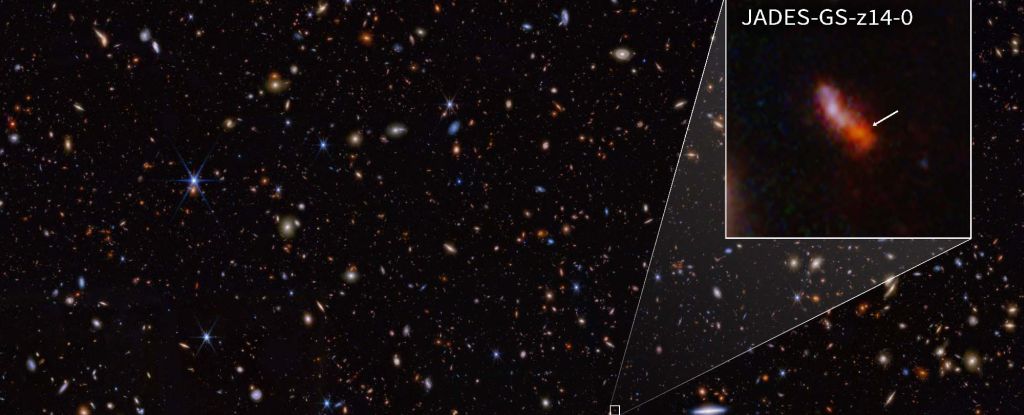Astronomers have recently shattered records with the discovery of the earliest galaxy observed to date, JADES-GS-z14-0. This observation is turning heads in the scientific community, as it challenges our existing theories of galaxy formation and the timeline of the universe. Located as it appeared less than 300 million years after the Big Bang, this galaxy is a beacon illuminating the cosmic epoch known as Cosmic Dawn.
This discovery was made possible by the NIRSpec on the James Webb Space Telescope (JWST), which observed the galaxy for nearly ten hours. The data confirmed an unprecedented redshift of 14.32, which places the galaxy at a time when the universe was less than 300 million years old. Surprisingly, JADES-GS-z14-0 spans over 1,600 light-years and its mass is estimated to be several hundreds of millions of times that of the Sun. This is quite significant as it implies the presence of numerous young stars rather than light from a growing supermassive black hole.
Such findings are reshaping our understanding of the universe’s early days. During Cosmic Dawn, the universe was predominantly a fog of neutral hydrogen that scattered light, obscuring our view. This fog eventually cleared, thanks to ultraviolet light from early cosmic objects, making the space transparent by the end of this era. JWST’s ability to observe in infrared, which can penetrate this dense early cosmic fog, has been instrumental in uncovering objects like JADES-GS-z14-0.
The light analysis from JADES-GS-z14-0 shows unexpected elements such as dust and oxygen, indicating that several generations of massive stars had already formed and died within this galaxy’s short lifespan. These insights challenge the traditional belief that such mature galaxies and their complex chemical compositions take much longer to evolve.
In conclusion, this galaxy not only challenges our understanding of how quickly complex galaxies can form but also serves as a prototype for studying early universe formation. This finding represents a significant paradigm shift in cosmology, suggesting that the processes behind galaxy formation may be more varied and rapid than previously believed.
Read more about this fascinating discovery in the detailed coverage at ScienceAlert.
